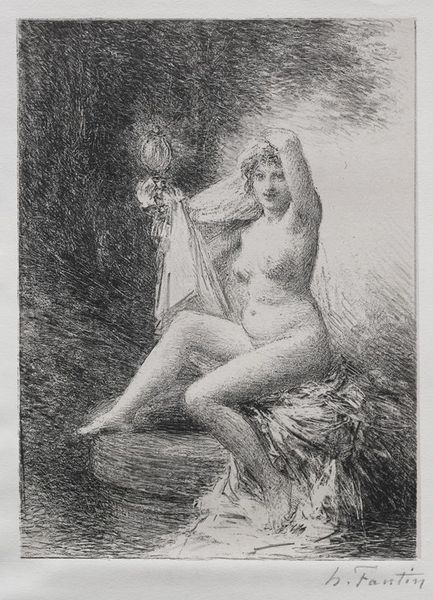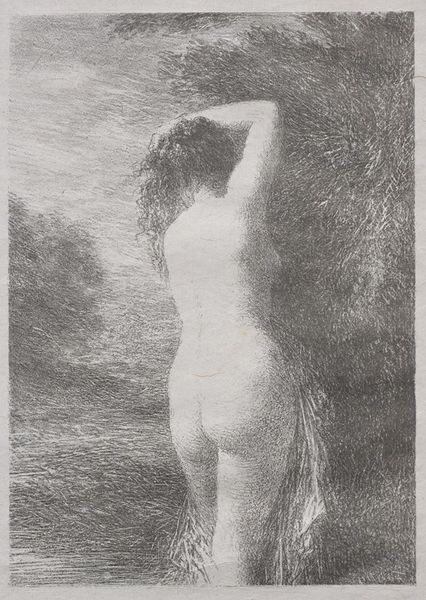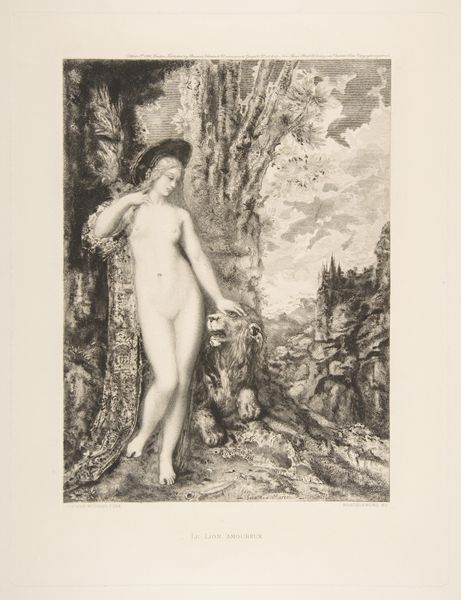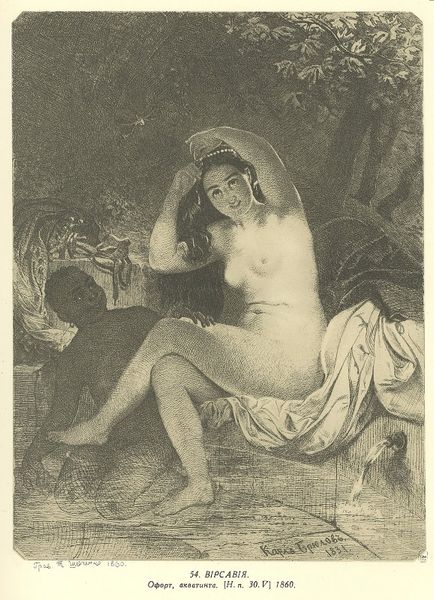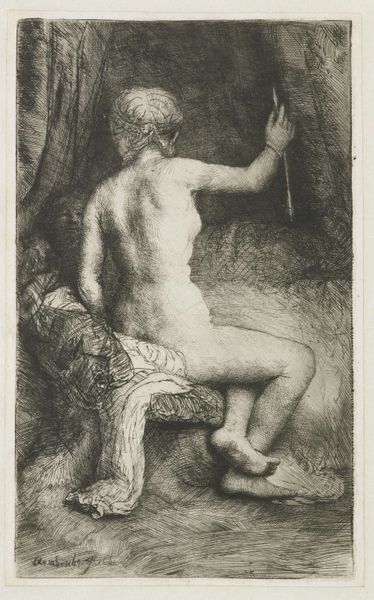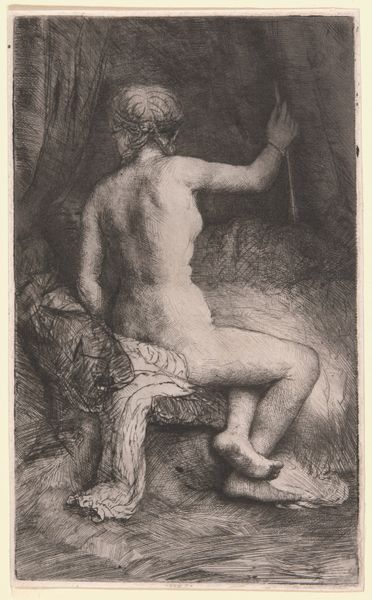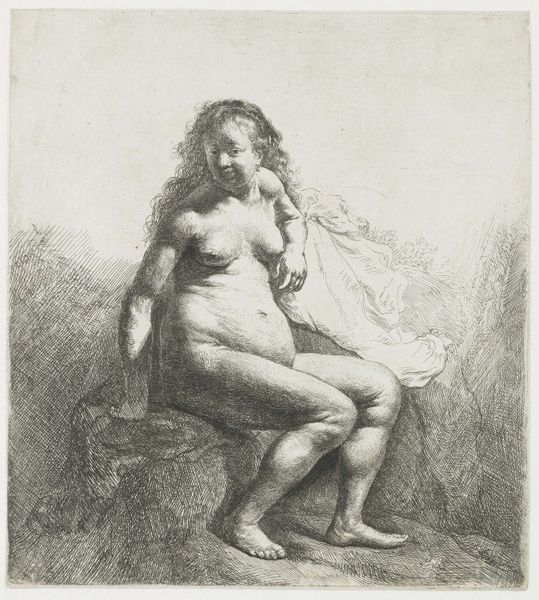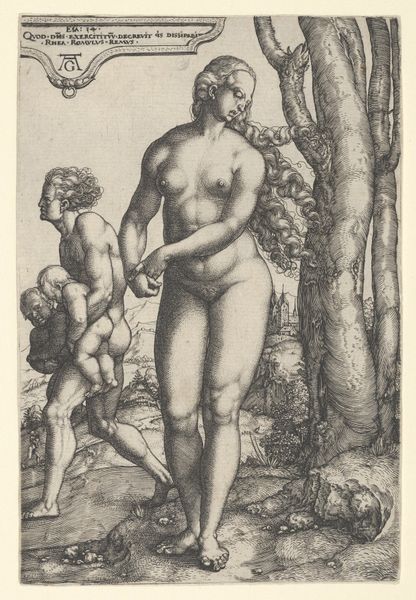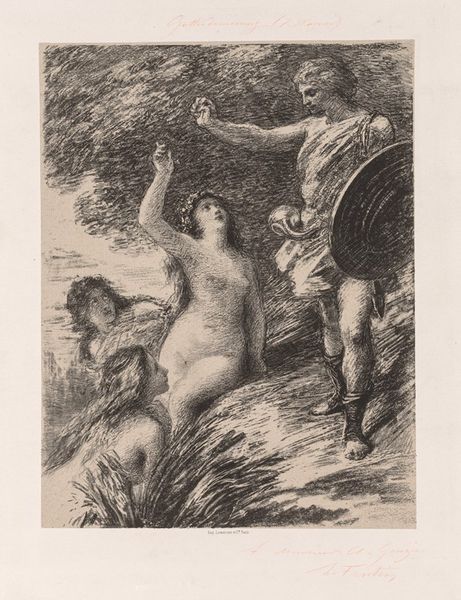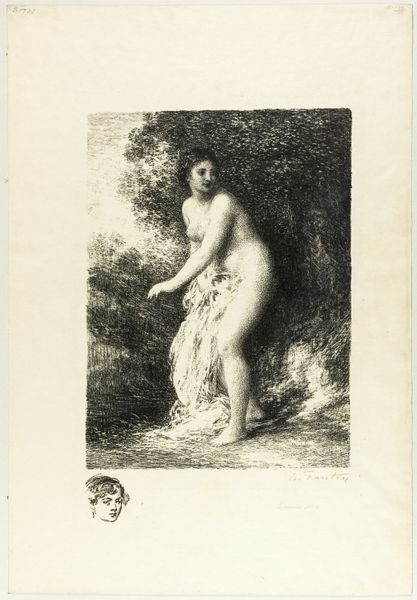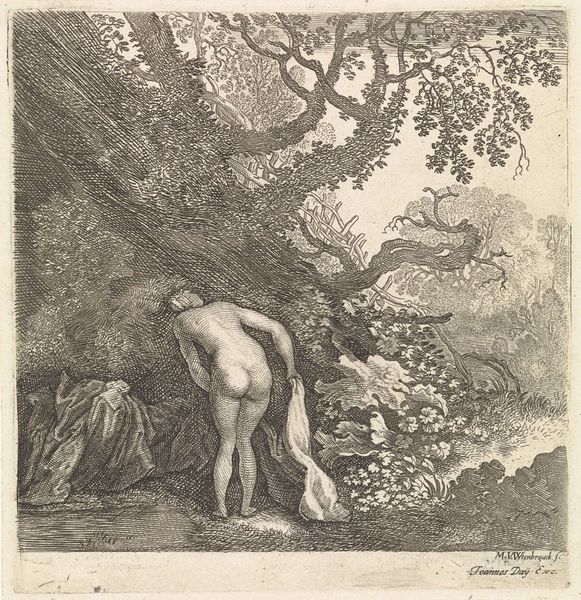
drawing, pencil
#
pencil drawn
#
drawing
#
pencil sketch
#
charcoal drawing
#
pencil drawing
#
pencil
#
symbolism
#
nude
Copyright: Public Domain: Artvee
Editor: This is Henri Fantin-Latour's "Eve," a pencil drawing from 1896. It's interesting how delicate the lines are, yet the subject matter is so loaded with symbolic weight. How do you interpret this work, especially considering the history of Eve as a figure? Curator: It's fascinating, isn't it? Notice how Fantin-Latour places Eve not in a lush, overtly paradisiacal setting, but in a shaded, almost melancholic grove. What emotions does that invoke for you, knowing the traditional story? Editor: It feels… ambiguous? Not the vibrant, tempting Garden of Eden, but something more introspective and perhaps already touched by loss. Curator: Precisely. Eve is perpetually associated with transgression and knowledge, isn't she? Consider the symbol of the apple: It’s not merely fruit; it represents the dawn of consciousness, a break from primal innocence. Is she taking the fruit or reaching for something more, something less tangible? Is the darkness of the grove her refuge or her punishment? Editor: I hadn't considered the darkness as possibly protective, a choice instead of just a consequence. Curator: Look at how the figure is positioned -- not confrontational, not seductive in a classical sense, but almost hesitant. Fantin-Latour subverts expectations. What might that say about his view of the Eve narrative itself? Could it be a commentary on blaming a woman as the origin of humanity's failings? Editor: I'm now seeing the drawing as more empathetic. It feels like a reimagining rather than a simple retelling. Thank you; that's a very different perspective. Curator: My pleasure. It’s in revisiting these well-worn symbols that we find new layers of meaning, which in turn say much about ourselves.
Comments
No comments
Be the first to comment and join the conversation on the ultimate creative platform.

